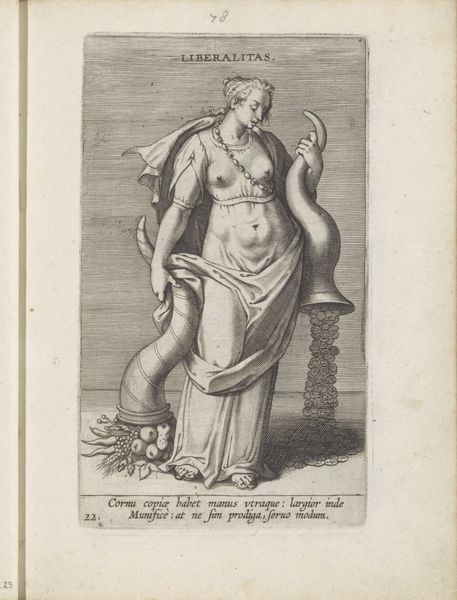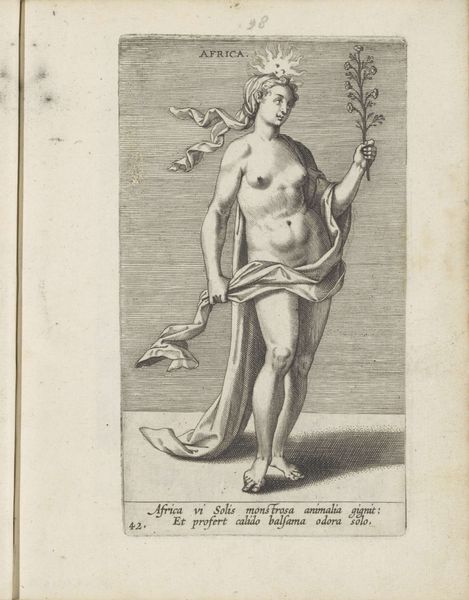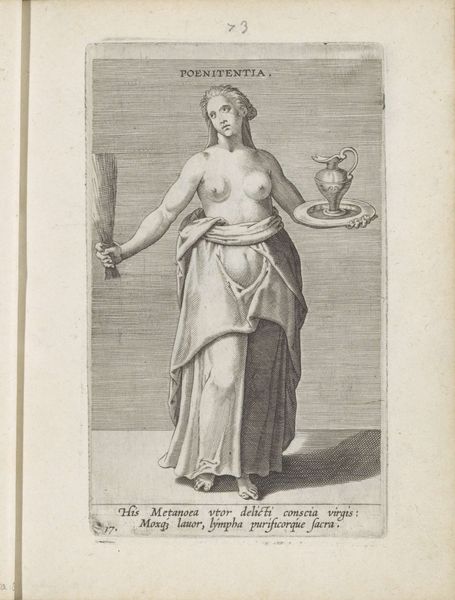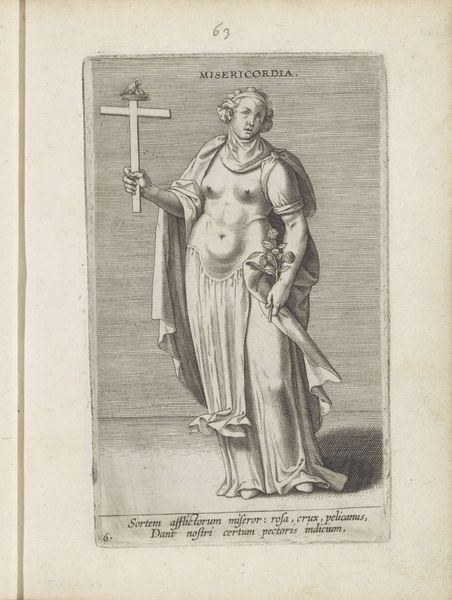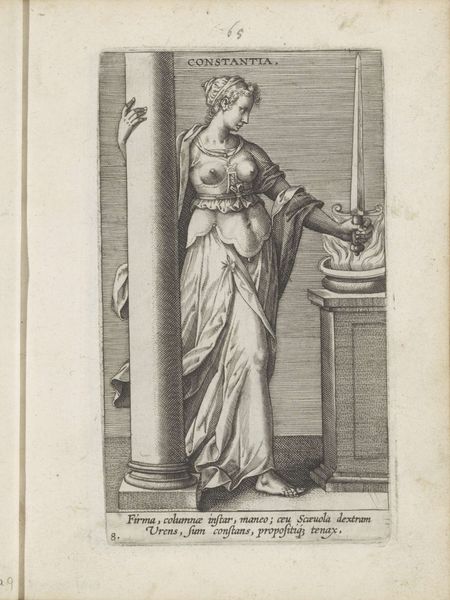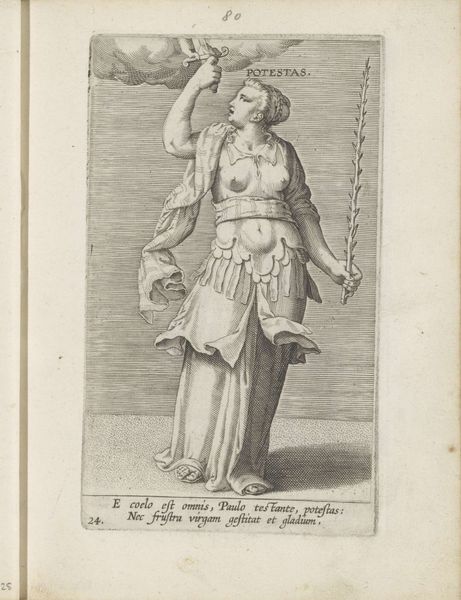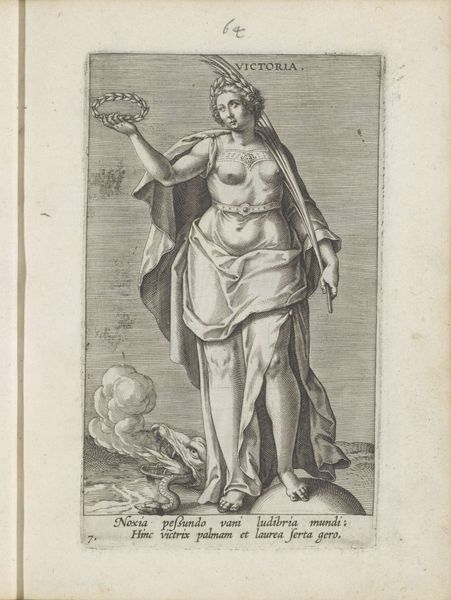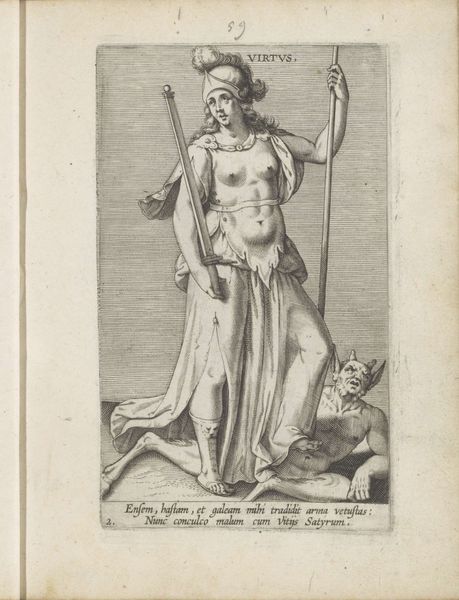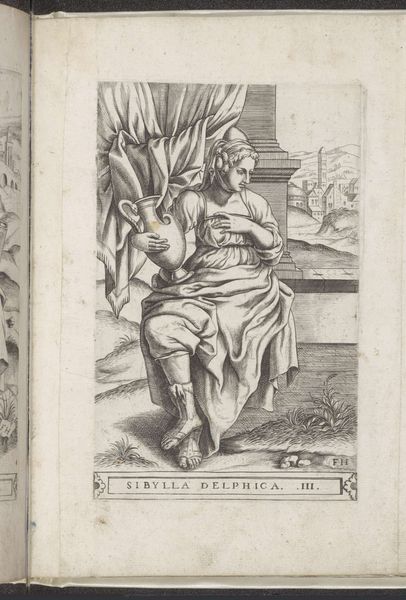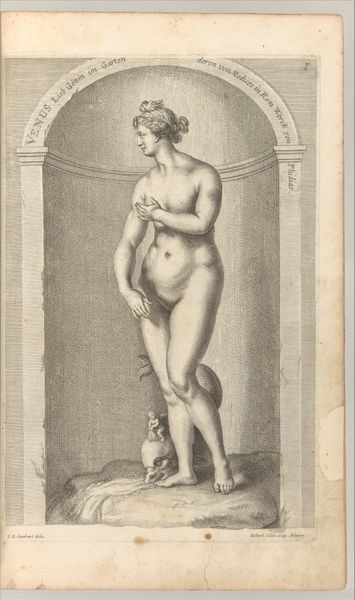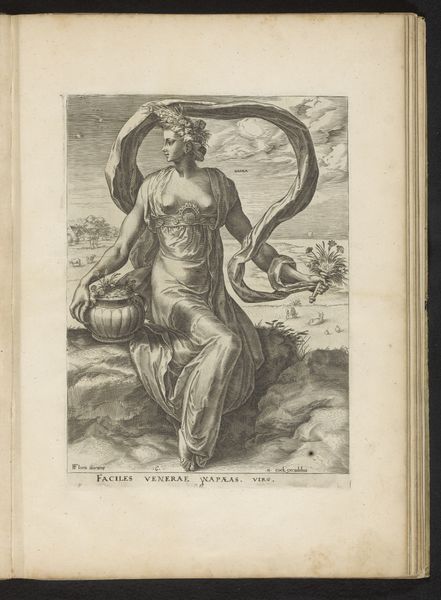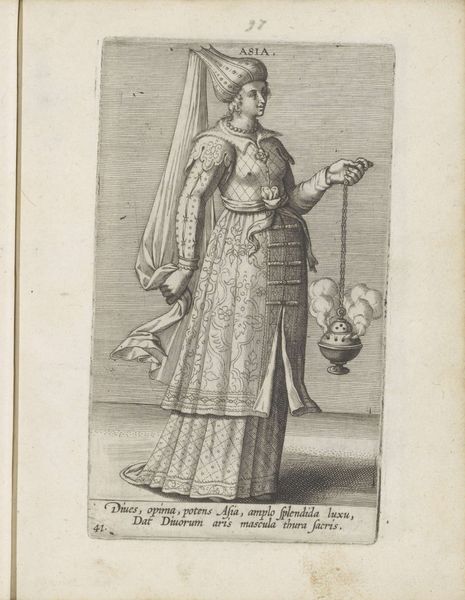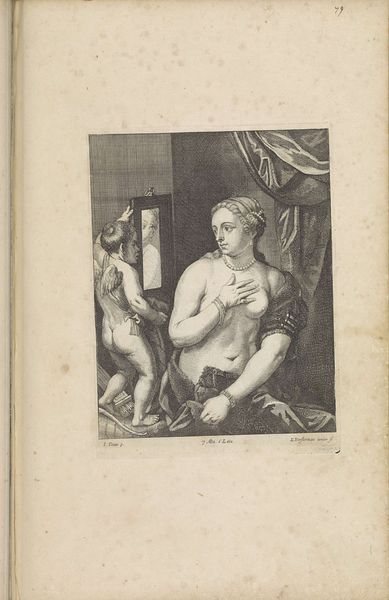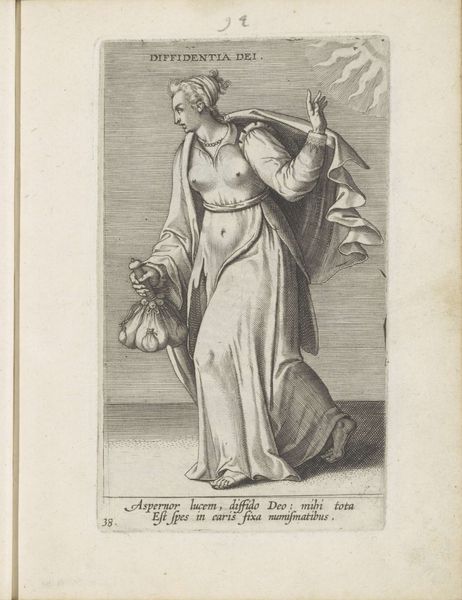
print, engraving
#
allegory
# print
#
old engraving style
#
mannerism
#
nude
#
engraving
Dimensions: height 150 mm, width 89 mm
Copyright: Rijks Museum: Open Domain
Philips Galle produced this engraving, ‘Schaamteloosheid,’ or ‘Shamelessness,’ in the Netherlands sometime in the late 16th century. As the title “Impvdentia,” or impudence, tells us, it is an allegorical print that judges a bare-breasted woman seated on a throne and holding a strange child. The image creates meaning through its historical associations. The Dutch Republic was being consolidated at this time, bringing with it new social institutions and moral codes. Galle’s engraving suggests the tensions of this historical moment through the woman’s indecent exposure. Does the woman represent the rejection of new social structures? Or does she represent the artist’s rejection of the new freedoms that Dutch society was slowly acquiring? These are questions we might ask. To better understand this image, one might research the history of Dutch social codes, and the role of the engraving in consolidating public opinion during the early modern period. The meaning of art is always contingent on such socio-historical contexts.
Comments
No comments
Be the first to comment and join the conversation on the ultimate creative platform.
